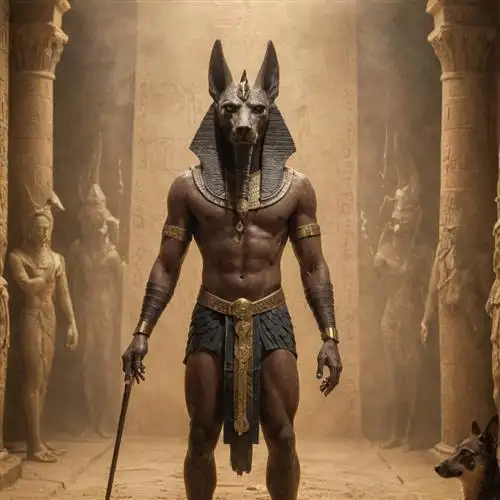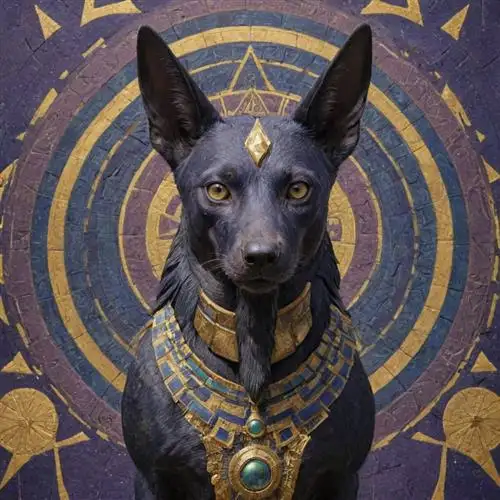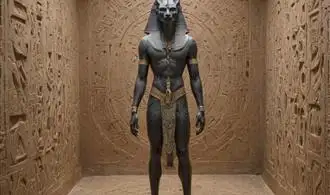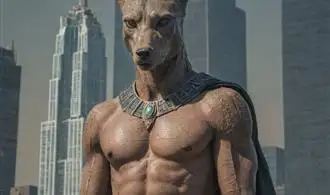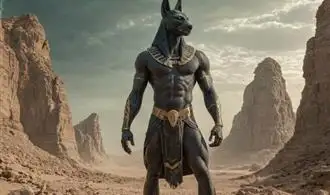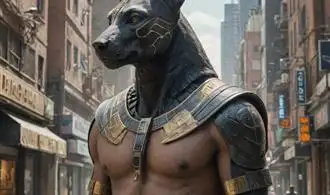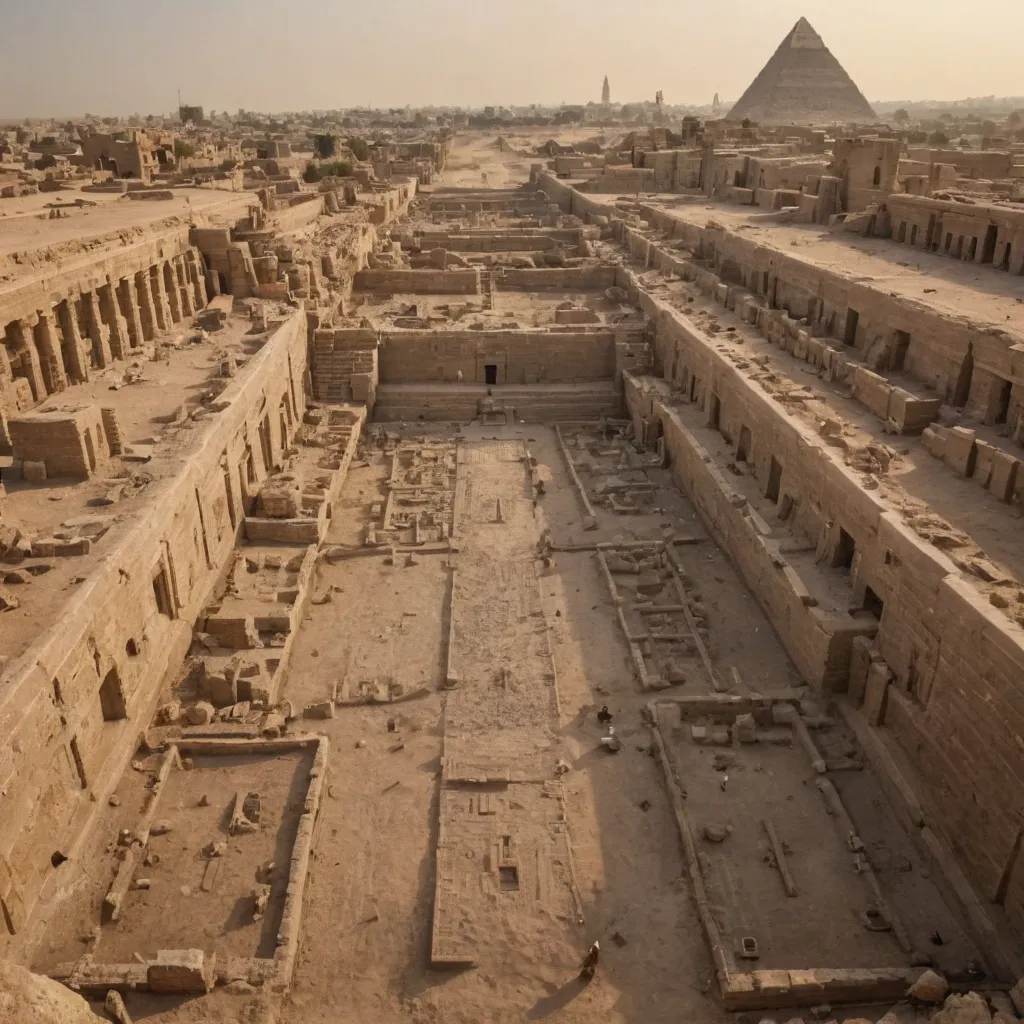
The Mysterious Origins of Anubis
The mysterious origins of Anubis, the ancient Egyptian god of the dead, have captivated historians and scholars for centuries. Anubis, depicted with the head of a jackal or wild dog, was a pivotal figure in the Egyptian pantheon, responsible for guiding the souls of the deceased to the afterlife. Tracing the roots of this enigmatic deity reveals a rich tapestry of cultural, religious, and mythological significance that is deeply woven into the fabric of ancient Egyptian civilization.
One of the key aspects of Anubis' origins lies in the ancient Egyptians' reverence for the jackal, a creature that was closely associated with the necropolis and the process of mummification. Jackals were often observed scavenging near burial sites, and this behavior led the Egyptians to believe that these animals were connected to the realm of the dead. Consequently, Anubis, the jackal-headed god, became the protector and guide of the deceased, responsible for overseeing the delicate process of mummification and ensuring the safe passage of the soul to the afterlife.
The earliest known depictions of Anubis date back to the First Dynasty, around 3100 BCE, suggesting that his worship and importance within the Egyptian pantheon were well-established from the very beginnings of ancient Egyptian civilization. Over time, Anubis' role and responsibilities expanded, and he became associated with a wide range of funerary rites and rituals. Unlock the Secrets of Anubis Rituals to delve deeper into the intricate ceremonies and practices that were centered around this enigmatic deity.
The connection between Anubis and the mummification process is particularly significant, as he was believed to have been the one who embalmed and prepared the body of the deceased for their journey to the afterlife. This role was not merely symbolic, as Anubis was thought to have the power to ensure the successful completion of the mummification process, thereby securing the deceased's eternal life in the hereafter.
Furthermore, Anubis was also associated with the weighing of the heart ceremony, a crucial ritual in the Egyptian conception of the afterlife. During this ceremony, the heart of the deceased was weighed against the feather of Ma'at, the goddess of truth and justice. Anubis was responsible for overseeing this process, ensuring that the deceased had lived a righteous life and were worthy of eternal rest in the afterlife.
The Roles and Responsibilities of Anubis
Anubis, the enigmatic jackal-headed deity, has long been revered in ancient Egyptian mythology as the guardian of the dead and the protector of the deceased. As the god responsible for the embalming process and the final journey of the soul, Anubis played a vital role in the intricate rituals and beliefs surrounding the afterlife. In this article, we will delve deeper into the roles and responsibilities of this powerful figure, shedding light on the profound significance he held within the Egyptian pantheon.
At the heart of Anubis' duties was his role as the overseer of the mummification process. As the one who guided the deceased through the complex and sacred rites of embalming, Anubis ensured that the body was properly prepared for its transition into the afterlife. This involved meticulously preserving the physical form, removing the organs, and wrapping the body in linen bandages – a process that was believed to be essential for the soul's successful passage into the next realm.
But Anubis' responsibilities extended far beyond the embalming chamber. As the guardian of the dead, he was also tasked with weighing the heart of the deceased against the feather of truth, a crucial step in the judgment of the soul. This ritual, known as the "Weighing of the Heart," determined whether the individual was worthy of eternal life in the afterworld. Anubis' role in this process was paramount, as he ensured the fairness and accuracy of the judgment, serving as a bridge between the mortal and divine realms.
Moreover, Anubis was believed to be the protector of the deceased, guiding and safeguarding the soul on its perilous journey through the underworld. This belief was reinforced by the placement of Anubis statues or figures near tombs and burial sites, ensuring the deceased were under the watchful eye of the jackal-headed deity.
Interestingly, Anubis' iconography and symbolism extended beyond the realm of the dead, as he was also associated with other aspects of Egyptian life. For instance, 7 Surprising Facts About Anubis Imagery explores how the jackal-headed figure was depicted in various artistic and cultural contexts, from temple decorations to personal amulets and talismans.
The Iconography and Symbolism of Anubis
Anubis, the jackal-headed Egyptian deity, is a complex and multifaceted figure whose iconography and symbolism have captivated scholars and enthusiasts alike. As the god of the underworld, embalming, and the afterlife, Anubis played a crucial role in ancient Egyptian mythology and religious practices.
The jackal-like head of Anubis is one of the most recognizable aspects of his iconography. This unique feature is believed to symbolize his association with the desert and the wild canines that roamed the necropolis, where the dead were interred. The jackal was also thought to possess the ability to navigate the afterlife, making Anubis an ideal guide for the deceased.
In addition to his jackal-like head, Anubis is often depicted holding a flail and crook, which were symbols of royal authority in ancient Egypt. These items, associated with the pharaohs, suggest Anubis' role as a protector and guardian of the dead, ensuring their safe passage to the afterlife.
Another significant aspect of Anubis' iconography is his connection to the embalming process. As the god of embalming, Anubis was responsible for overseeing the preparation of the deceased for the afterlife. This included the careful removal of the organs, the drying and wrapping of the body, and the application of sacred oils and unguents.
The color black, which is often associated with Anubis, is believed to symbolize both the color of the fertile Nile soil and the decomposition of the body. This duality represents Anubis' role as a deity who presides over both the cycle of life and death, and the transformation from the physical to the spiritual realm.
Anubis' iconography and symbolism have been widely represented in ancient Egyptian art and artifacts, from tomb paintings and funerary masks to small statues and amulets. These depictions not only showcase the deity's visual attributes but also provide insights into the beliefs and practices of the ancient Egyptians.
The Influence of Anubis on Ancient Egyptian Beliefs
Anubis, the jackal-headed deity, held a significant position in the pantheon of ancient Egyptian gods. As the god associated with mummification, the afterlife, and the underworld, Anubis played a crucial role in shaping the beliefs and practices of the ancient Egyptians. His influence permeated various aspects of their culture, from funerary rites to the conceptualization of the afterlife.
One of the primary ways Anubis influenced ancient Egyptian beliefs was through his role in the mummification process. As the god responsible for the embalming and preparation of the deceased, Anubis was believed to ensure the safe passage of the soul into the afterlife. The ancient Egyptians meticulously followed the rituals and practices associated with mummification, which were overseen by the priests of Anubis. This reverence for the process of mummification reflects the profound respect and importance the Egyptians placed on the journey of the soul after death.
Anubis also featured prominently in the ancient Egyptian conception of the afterlife. As the guardian of the underworld and the weigher of the heart, Anubis played a central role in the judgement of the dead. According to the Egyptian Book of the Dead, the deceased would undergo a ritual where their heart was weighed against the feather of truth, representing their moral worthiness. Anubis would oversee this process, ensuring the soul's successful transition to the afterlife based on the outcome of the weighing. This belief in the afterlife and the importance of the journey after death were fundamental to the ancient Egyptian worldview.
Furthermore, Anubis was believed to be the protector of the dead, guiding and safeguarding the souls of the departed. His presence in the funerary rites and his association with the underworld reinforced the idea of a continued existence beyond the physical realm. The ancient Egyptians sought the favor and protection of Anubis, incorporating him into their mortuary practices and beliefs about the afterlife.


